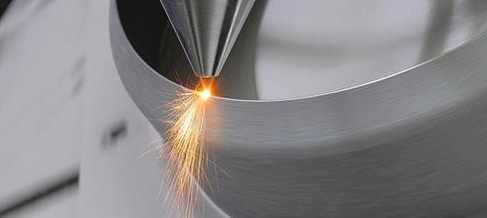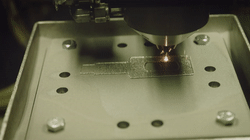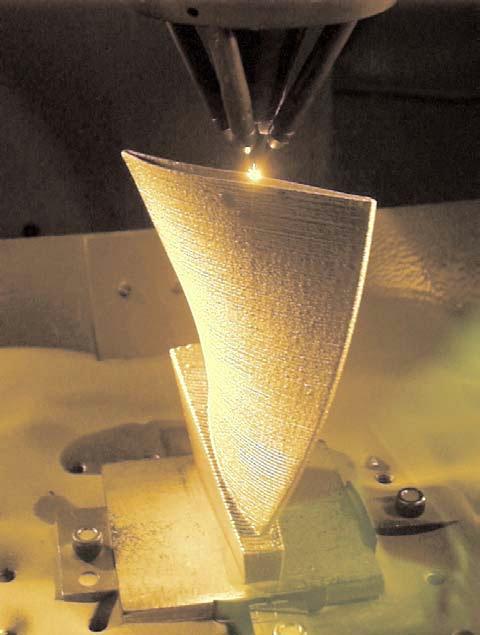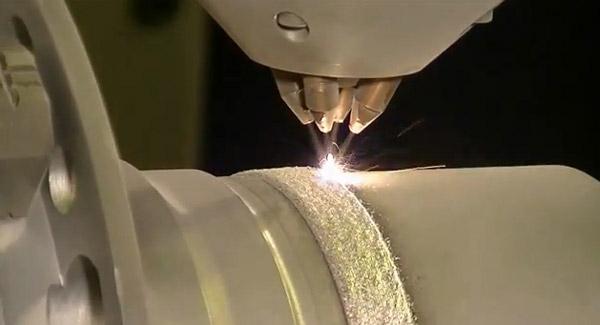What you bring today is LENS (laser near net shape) technology. Since the advent of this technology, it has been favored by the industry because of its ability to achieve gradient materials, complex surface repair and other functions. With these advantages, LENS technology is constantly playing a role in the repair of large-scale devices, and it has become a bridge linking traditional manufacturing and 3D printing . LENS technology principle The near net forming technology refers to the forming technology of mechanical components after the parts are formed, requiring only a small amount of processing or no further processing. Laser Engineered Net Shaping (LSS) deposits three-dimensional objects layer by layer by laser to create a molten pool in the deposition area and continuously melt the powder or filament material. The LENS technology was developed by the Sandia National Laboratory in the United States in the 1990s, and then the American company Optomec commercialized and promoted LENS technology. Because the LENS technology is independently researched by many universities and institutions, the name of this technology is numerous. LENS technology is also called Laser Metal Deposition (LMD). The University of Michigan is called Direct Metal Deposition (DMD). The University of Birmingham is called Directed Laser Fabrication (DLF). Professor Huang Weidong of the university called it Laser Rapid Forming (LRF). The technology is harmonized as part of the Directed Energy Depositioin (DED) technology in the American Society for Testing and Materials (ASTM) standards. The picture shows that LENS technology is repairing the surface of the object. LENS technology is repairing the surface of objects In the LENS technology process, the computer first slices the 3D CAD model according to a certain thickness, and the 2D plane data of each layer is converted into the motion track of the printing machine numerical control table. The high-energy laser beam generates a molten pool on the bottom plate, and simultaneously feeds the metal powder into the molten pool and rapidly melts and solidifies, so that it is solidified from point to line and from line to surface, thereby completing a layer cross-section printing work. . This layer is superimposed to create a near-net shape component entity. LENS technology is mainly used to print relatively mature commercial metal alloy powder materials, including stainless steel, titanium alloys, nickel-based alloys and so on. LENS printing process LENS advantages and technical limitations LENS technology enables moldless manufacturing of metal parts, saving costs and shortening production cycles. At the same time, the technology solves a series of problems in the traditional manufacturing process of complex curved parts, such as difficulty in cutting, large material removal, and serious tool wear. LENS technology is a direct metal forming method that does not require post-treatment. The formed parts are densely organized, have high mechanical properties, and can be used to manufacture parts of heterogeneous and gradient materials. LENS technology has also encountered some bottlenecks, including low utilization of powder materials, high thermal stress during forming, easy cracking of formed parts, and low precision of the formed parts, which may affect the quality and mechanical properties of the parts. Due to factors such as the size of the laser spot and the accuracy of the table movement, the dimensional accuracy and surface roughness of the directly manufactured functional parts are poor, and subsequent machining is often required to meet the requirements of use. LENS application LENS technology is mainly used in aerospace, automotive, marine and other fields, for the manufacture or repair of impeller blades for aero engines and heavy gas turbines, as well as lightweight automotive parts. LENS technology enables the repair and remanufacturing of worn or damaged blades, which greatly reduces blade manufacturing costs and increases production efficiency. Manufacturing engine blades using LENS technology Repair damaged parts with LENS technology Germany's OR Laser uses LENS technology to create a hard alloy cladding on the sensor surface, providing reliable protection for sensor components in the oil and gas industry and significantly extending sensor life. This method enables accurate deposition of materials, low thermal penetration, and ultimately a sensor that is coated with an undistorted, crack-free coating, as shown. Hard alloy cladding on the sensor surface (Source: 3D Science Valley) The function of ladder string are used in aluminum with screens,PVC and wood curtain,also,we can manufacture these according to your orders. Ladder String WUXI MIFUN INTERNATIONAL TRADE CO.,LTD , https://www.mifunblind.com




